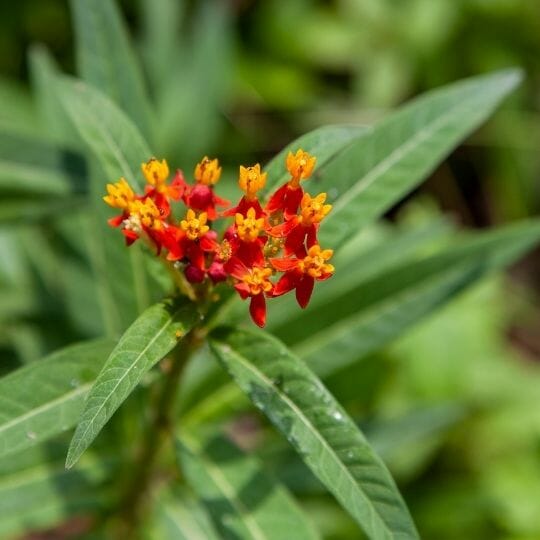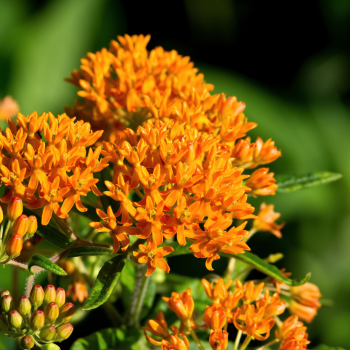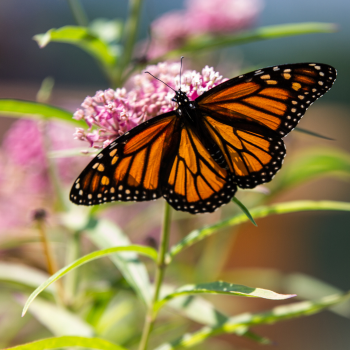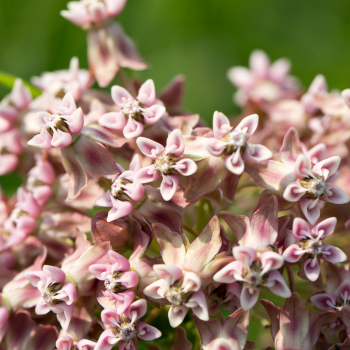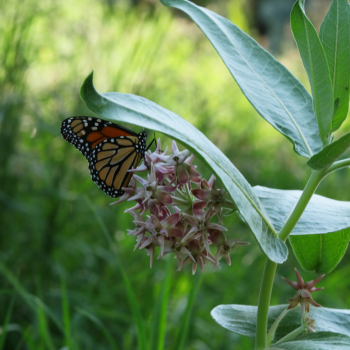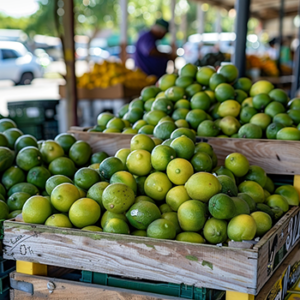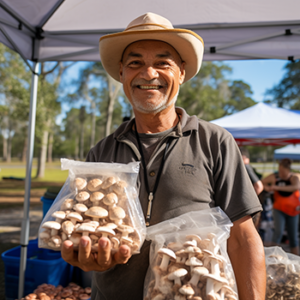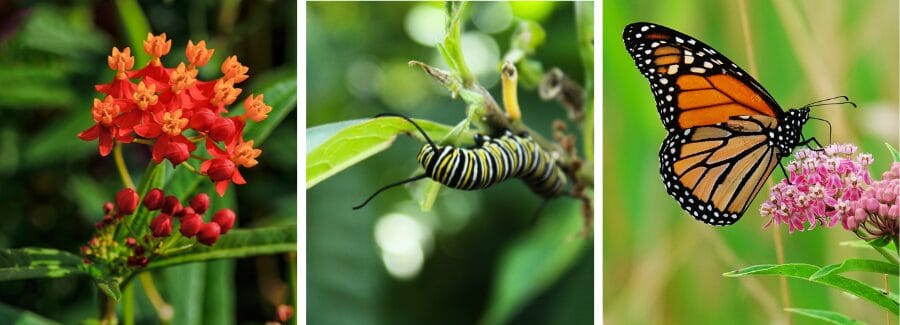
Native Florida Milkweed Plants for Monarch Butterflies
Native Florida milkweed plants are a vital resource for monarch butterflies, an iconic symbol of resilience that undertakes a yearly migration of thousands of miles across North America.
Sadly, their populations have been declining due to habitat loss. Planting these native milkweeds in your Florida garden is a simple yet impactful way to help these beautiful butterflies!
Let’s dive into the details of Florida native milkweed plants:
- Life Cycle of the Monarch Butterfly
- Native Milkweed vs. Tropical Milkweed (the argument)
- Favorite Milkweed types to grow in Florida
- Easiest ways to grow milkweed
- FAQs
The Life Cycle of the Monarch Butterfly
Monarch butterflies have a fascinating four-stage lifecycle: egg, larva (caterpillar), pupa (chrysalis), and adult. Milkweed plays a vital role in this cycle, as it’s the only food source for monarch caterpillars.
Adult butterflies lay their eggs on the underside of milkweed leaves. The caterpillars that hatch will munch on these leaves, accumulating toxins that make them unpalatable to predators.
Once they reach maturity, the caterpillars form a chrysalis, where they transform into the adult butterflies we know and love.
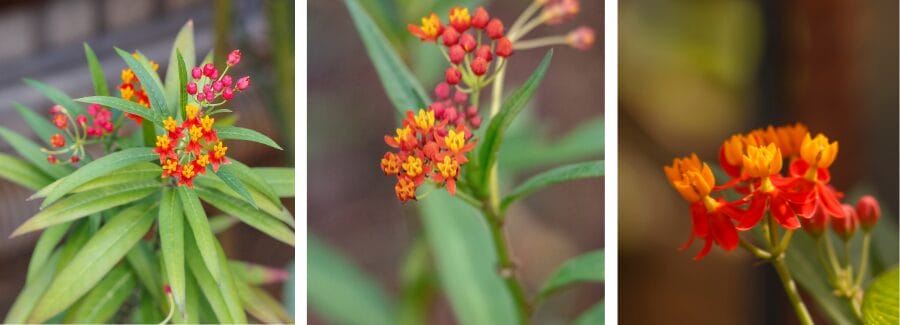
Native Milkweed vs. Tropical Milkweed (the Argument)
While all milkweed attracts butterflies and pollinators, monarch butterfly conservationists recommend planting native milkweed species.
Here’s why:
Disrupted Migration Patterns: Some non-native milkweed varieties, like tropical milkweed (Asclepias curassavica), flower year-round. This can trick monarchs into staying put and breeding outside their usual migratory patterns.
Tropical milkweed is not native to Florida, but is currently the most popular and recognizable type being sold in South Florida. Why? Because this milkweed variety grows well in these hottest climates where most available native milkweed varieties don’t grow well.
While it’s not the best choice for monarchs, Tropical Milkweed is still good for the environment because it attracts pollinators like bees, hummingbirds and other butterflies who also love milkweed.
Florida Planting Zones (a sketch)
Click image if you’d like to see the official USDA Plant Hardiness Florida map, last update 2023.
Favorite Native Florida Milkweed Types to Grow
Florida has over 20 native milkweed species! However, most are not available commercially and some of them are rare and/or threatened. Here are the most popular native milkweed choices for your Florida garden:
Butterfly Milkweed (Asclepias tuberosa):
This vibrant orange flowered milkweed is a favorite among butterflies and gardeners alike. It thrives in well-drained soil and full sun and attracts butterflies, hummingbirds and bees.
It typically grows between 18″ – 30″ tall, and prefers growing in Florida planting zones 8-9 (central and north Florida) though many gardeners have had luck growing it in South Florida also… it’s worth a try!
Swamp Milkweed (Asclepias incarnata):
This tall milkweed grows 3-5 feet tall! It’s great to grow against a wall, or place at the back of a garden (so you don’t block the sun shining on shorter varieties).
This is a very pretty milkweed variety with pink or white flowers. It prefers moist areas. If you have hills and drainage ditches, plant these in the ditches. If you have cypress swamp or a boggy area, plant these there!
Or if you live in a rainy region of Florida or grow veggies and water them every daily, this pollinator is a strong choice. Prefers growing in zones 8-9.
White (Aquatic) Swamp Milkweed (Asclepias perennis):
Tall white milkweed that prefers moist areas and is also known as Aquatic Swamp Milkweed because it grows well in bogs and swampy areas. Grows well with partial sun, in zones 8-9, most especially in wetlands, cypress swamps, water drainage ditches.
Pinewoods Milkweed (Asclepias humistrata):
Also known as Sandhill Milkweed, grows in sandy pine forests, sandhills, scrub, pineland, hot and dry conditions. Flowers are a pretty light pinkish. Grows best in zones 8-9 (central and north Florida).
Showy Milkweed (Asclepias speciosa):
This milkweed features clusters of showy pink or purple flowers, attracting butterflies and adding a touch of elegance to your garden. It thrives in well-drained soil and full sun, making it a low-maintenance choice. Grows best in central and north Florida. Typically reaches a height of 1 to 3 feet tall, offering a manageable size for most gardens.
Easiest Ways to Grow Milkweed
Growing milkweed is a breeze! Here are some simple tips:
- Start from Seed: Milkweed seeds germinate readily. Sow them directly in your garden in the fall or early spring.
- Provide Sunshine: Most milkweed varieties prefer full sun.
- Well-Drained Soil: Milkweed doesn’t tolerate soggy conditions. Amend your soil with some sand if necessary.
- Minimal Care: Once established, native milkweed requires minimal care. Water deeply during dry spells, but avoid overwatering.
And…
Grow a bunch of milkweed, not just one plant!
If you have even just one caterpillar growing on a milkweed plant, they will eat through that plant very quickly, stripping all the leaves down to nothing! By proving multiple plants in the same space, they will be able to move to another plant to continue eating, if needed.
And once they’ve consumed all the milkweed leaves they need, they’ll move to a safe place to begin their next phase of life. Don’t worry if you find their chrysalis on a nearby wall or a different plant. When they need that milkweed again as a butterfly, they’ll find it!
Milkweed and Your Pets
Milkweed contains toxins that, if ingested in large quantities, can cause harm to both animals and humans.
Is this reason NOT to plant milkweed? The experts seem to agree milkweed doesn’t pose a big threat BUT we wanted to get more information from the experts, so we went over to FWC.
Here’s what Florida Fish and Wildlife Conservation Commission says about milkweed and toxicity concerns.
FAQs
What is Florida native milkweed?
Florida native milkweed is a type of milkweed plant that is native to Florida and is an important host plant for monarch butterflies.
What are the benefits of Florida native milkweed?
Florida native milkweed provides food and habitat for monarch butterflies and other pollinators. It also helps to support biodiversity and is an important part of Florida’s natural ecosystem.
How do you grow Florida native milkweed?
Florida native milkweed can be grown from seeds or cuttings and prefers well-drained soil and full sun. It is important to avoid using pesticides on or near the plants as they can harm the monarch butterflies that rely on them.
What are the different types of Florida native milkweed?
There are several different types of Florida native milkweed, including swamp milkweed, butterfly weed, and sandhill milkweed. Each type has its own unique characteristics and growing requirements.
Why is Florida native milkweed important?
Florida native milkweed is important because it provides critical habitat for monarch butterflies and other pollinators. It also helps to support biodiversity and is an important part of Florida’s natural ecosystem. Additionally, it can be used in landscaping to add beauty and interest to gardens and other outdoor spaces.

